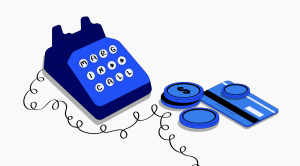If you’ve already heard about margin calls and stop out or even faced their power in practice, it’s time to dive deeper and draw a clear line between these 2 terms. A lot of beginners struggle to distinguish them, so, in today’s piece, let’s find out what margin calls and stop out warnings really are and how you can avoid them.
Margin Call vs Stop Out — What’s the Difference?
In its core, margin call means a notification broker sends to the trader with a demand to add more funds either by depositing more money or selling some assets. This way, the company warns you, the trader, that without a deposit and with escalating losses on the account reaching a critical point, they’ll have to close a certain number of your positions to manage the risk.
Stop out, in turn, is an automatic closing of your positions in the scenario when there are too few funds on your balance to keep the positions open. So, first, a margin call, i.e., a warning, goes, and only after, there can appear a stop out, which is a liquidation of positions in case you ignored the margin call and didn’t add more funds to your balance.
Liquidation of positions starts with unprofitable ones, continuing until the needed margin level is reached. The main goal of stop out is for you not to lose more than you can afford with your initial deposit amount. Because once it happens, your balance would be negative, and your broker would have to bear the cost of the negative difference at their expense (balance fixed). Sometimes, very rarely, these cases occur, for instance, after weekends or during price gaps.
When you’re starting to work with a broker, always check their margin and stop out levels, as it differs from one broker to another. These levels can be tracked through the trading terminal. For instance, in MT4 and MT5, you can find the “Margin Level” displayed in the “Terminal” section, along with “Balance,” “Equity,” “Margin,” and “Free Margin.”
Which Parameters Impact the Margin Level?
The “Margin Level” decreases mainly due to two factors:
- Floating losses.If your open positions accumulate significant unrealized losses, your equity decreases. Since the Margin Level is calculated as (Equity / Margin) × 100%, a drop in equity reduces the Margin Level.
- Volume of open trades.Opening a large number of positions or high-volume trades increases the required margin. As the margin rises while equity remains constant, the Margin Level decreases.
Tips to Avoid Margin Call and Stop Out Warnings
To become better in trading and never have a deal with a margin call and stop out, use these single tips:
- Control floating losses. Prevent floating losses from growing by cutting them early and setting stop-loss orders.
- Limit the number of open trades. Don’t open too many positions at the same time, because this increases your cumulative floating losses and required margin.
- Manage trade volume. Refrain from unnecessarily increasing the size of your trades. Only adjust trade volumes when supported by a well-thought-out strategy, and always manage your risk.
- Close trades weekly. Whenever possible, close all positions by the end of the trading week to reduce exposure to weekend market gaps.
- Monitor the margin level carefully. Keep a close eye on the margin level in your trading terminal. Be sure it stays > 500% to maintain a healthy balance and forget about margin calls.
- Set the right leverage:
- High level of leverage reduces the required margin but increases the risk of rapid equity depletion.
- Low level gives more stability but demands a larger deposit to open and sustain positions.
- If using maximum leverage, manage your open trades thoroughly to ensure the cumulative risk of all your positions remains within acceptable limits.
Final Line
Whether you’ve just begun or already traded for some time, it’s always useful to learn new things. For this reason, to be a good trader, you should be aware of the topic we covered today. We hope you’ll never deal with margin calls and stop outs on your path, but if so, come back to this article and, what’s most important, keep calm and don’t let stress and emotions control your trading.
